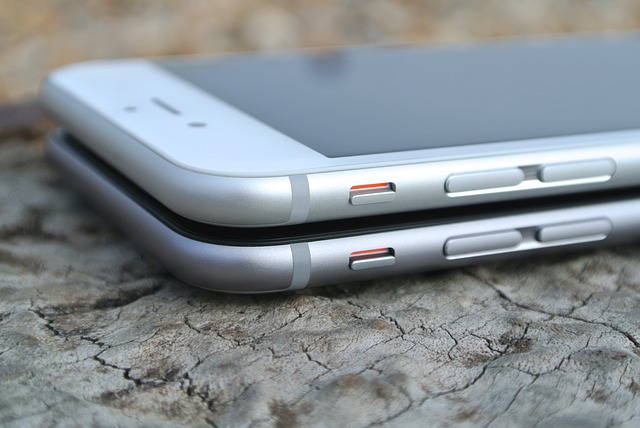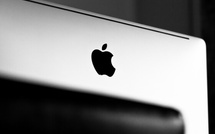
The first step is always troublesome. This folk wisdom can be fully attributed to some devices, which just appeared on the market. However, often the idea of buying a particular gadget should be postponed for reasons not depending on the quality of high-tech products. For example, US airlines are beginning to prohibit "smart" luggage. The passenger will need to remove the battery from the smart baggage before departing by any American or American Eagle flight. A little later, similar statements were made by Alaska Airlines and Delta Air Lines. Did you plan to buy an "intelligent" suitcase? Well, maybe it's worth taking a less "troubled" gadget.
VR-systems
Several major companies, including Google, Samsung, HTC, Sony, are betting on VR devices. Despite the explosive growth of interest in the segment and the bright forecasts about the future of VR technologies, consumers may better refrain from buying a VR helmet.
The reason is the lack of sufficient content. Yes, the hardware becomes more advanced, user-friendly and, it should be noted, is cheaper. But there are no breakthrough gaming and other projects for virtual reality so far. Yes, you can invest in a top-end helmet from Sony or Oculus. But the list of games and applications that are available to consumers is not very long. The technology is promising and can, undoubtedly, become a new ecosystem of home entertainment. But not in the near future.
"Smart" household appliances
One of the most saturated categories of products at the Consumer Electronics Show in January last year was "smart" technology. LG, Samsung and Whirlpool presented a variety of smart refrigerators and washing machines. While the innovative factor of these products is obvious, buyers should think twice before throwing out their usual, "non-smart" device.
A refrigerator can serve 10 years, and the software inside will be updated quite often. It makes no sense to change something that works and performs its basic function.
4K-TVs
The name 4K is very simple to understand. This is the number of pixels along the horizontal line of the display. There is about 4 thousand of them, that is four times more than the standard Full HD with its 1080 pixels. The 4K picture is much more clear and pleasant, which is particularly well noticeable on large and very large (for example, 65-inch) screens.
Due to technical difficulties, the 4K-TV or monitor has a modest update rate of 60 Hz. This may not be enough for games. However, it will be just right for movies, but the content should be in the appropriate definition. You can watch it on Netflix, YouTube and a number of other services.
If your TV is not more than 2-3 years old, there is no point in hurrying up with the update. A win in definition will result in a bunch of associated costs. In addition, 4K-TVs are 2 or more times more expensive than the usual HD 1080, and you probably will not notice the difference.
iPhone X
iPhone X is an anniversary smartphone from Apple. But if you do not belong to those obsessed with Apple, and you are serious about buying, then it's worth thinking about. The anniversary iPhone X is the most expensive in the entire line of smartphones Apple. However, many experts doubt the validity of such a price tag for unobvious innovations.
Among the things that you pay attention to when talking about the iPhoneX is a frameless screen. There is a cutout on the top of the display. It hides several sensors, an infrared camera, a radiator, a microphone, a self-camera and a point projector - this, of course, is not a convenient frame, but not a frameless screen, too. In addition, not all applications are adapted to this central cutout. By the way, similar displays are not new for the mobile industry. They have long been equipped with Korean and Chinese smartphones.
An innovative face detection sensor can be deceived, but anyway, what is its advantage over the usual fingerprint scanner? In order to avoid surveillance by the special services, some users closed the front camera. Alas, the new iPhone X offers only old good code apart from Face ID. Therefore, we will have to allow the "big brother" to watch.
Besides, there are the wireless charging charges the gadget about 1.5-2 times slower than through the wire; a new swipe control, since there’s no usual "Home" button; the glass body is less resistant to scratches and external influences; the battery is not very capacious and weaker than the iPhone 8 Plus. Perhaps the next version of the smartphone will be more perfect.
VR-systems
Several major companies, including Google, Samsung, HTC, Sony, are betting on VR devices. Despite the explosive growth of interest in the segment and the bright forecasts about the future of VR technologies, consumers may better refrain from buying a VR helmet.
The reason is the lack of sufficient content. Yes, the hardware becomes more advanced, user-friendly and, it should be noted, is cheaper. But there are no breakthrough gaming and other projects for virtual reality so far. Yes, you can invest in a top-end helmet from Sony or Oculus. But the list of games and applications that are available to consumers is not very long. The technology is promising and can, undoubtedly, become a new ecosystem of home entertainment. But not in the near future.
"Smart" household appliances
One of the most saturated categories of products at the Consumer Electronics Show in January last year was "smart" technology. LG, Samsung and Whirlpool presented a variety of smart refrigerators and washing machines. While the innovative factor of these products is obvious, buyers should think twice before throwing out their usual, "non-smart" device.
A refrigerator can serve 10 years, and the software inside will be updated quite often. It makes no sense to change something that works and performs its basic function.
4K-TVs
The name 4K is very simple to understand. This is the number of pixels along the horizontal line of the display. There is about 4 thousand of them, that is four times more than the standard Full HD with its 1080 pixels. The 4K picture is much more clear and pleasant, which is particularly well noticeable on large and very large (for example, 65-inch) screens.
Due to technical difficulties, the 4K-TV or monitor has a modest update rate of 60 Hz. This may not be enough for games. However, it will be just right for movies, but the content should be in the appropriate definition. You can watch it on Netflix, YouTube and a number of other services.
If your TV is not more than 2-3 years old, there is no point in hurrying up with the update. A win in definition will result in a bunch of associated costs. In addition, 4K-TVs are 2 or more times more expensive than the usual HD 1080, and you probably will not notice the difference.
iPhone X
iPhone X is an anniversary smartphone from Apple. But if you do not belong to those obsessed with Apple, and you are serious about buying, then it's worth thinking about. The anniversary iPhone X is the most expensive in the entire line of smartphones Apple. However, many experts doubt the validity of such a price tag for unobvious innovations.
Among the things that you pay attention to when talking about the iPhoneX is a frameless screen. There is a cutout on the top of the display. It hides several sensors, an infrared camera, a radiator, a microphone, a self-camera and a point projector - this, of course, is not a convenient frame, but not a frameless screen, too. In addition, not all applications are adapted to this central cutout. By the way, similar displays are not new for the mobile industry. They have long been equipped with Korean and Chinese smartphones.
An innovative face detection sensor can be deceived, but anyway, what is its advantage over the usual fingerprint scanner? In order to avoid surveillance by the special services, some users closed the front camera. Alas, the new iPhone X offers only old good code apart from Face ID. Therefore, we will have to allow the "big brother" to watch.
Besides, there are the wireless charging charges the gadget about 1.5-2 times slower than through the wire; a new swipe control, since there’s no usual "Home" button; the glass body is less resistant to scratches and external influences; the battery is not very capacious and weaker than the iPhone 8 Plus. Perhaps the next version of the smartphone will be more perfect.


















